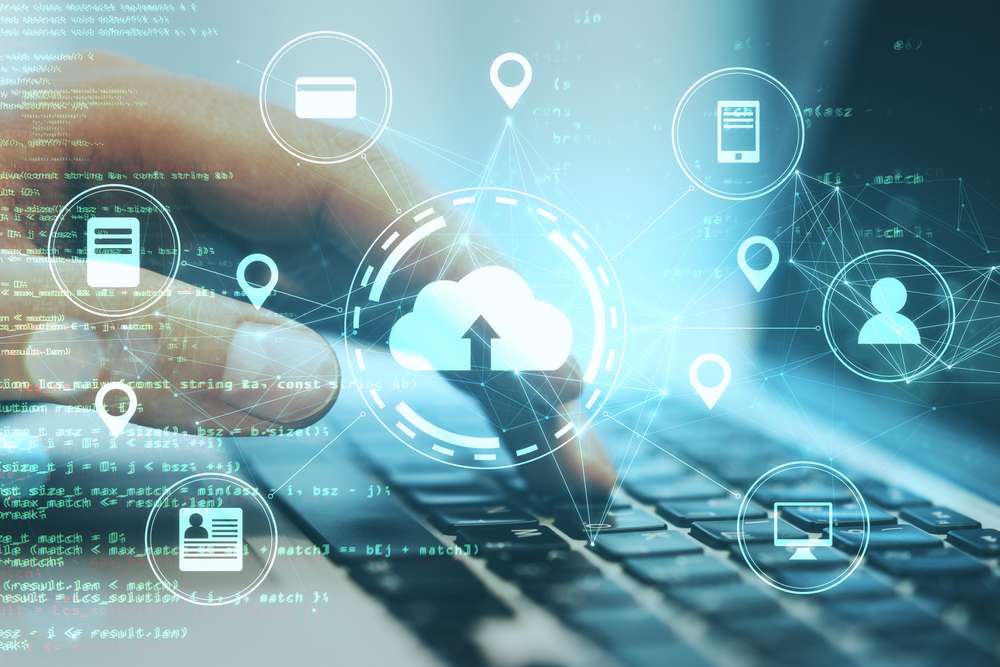
Introduction: Contextualizing Social Media and Learning Communities
In the modern world where technology is an integral part of daily life, social media platforms have shifted from being mere communication tools to spaces for various forms of interactions and collaborations, including learning. As the ubiquity and accessibility of technology have penetrated the education field, it has opened doors for unprecedented methods of teaching and learning, giving birth to a new concept: learning communities on social media.
A learning community is traditionally viewed as a group of individuals who share common academic goals and attitudes, who meet semi-regularly to collaborate on classwork. With the evolution of technology, these communities have now expanded beyond physical classrooms into the digital world. Social media, with their built-in features for engagement, interaction and real-time communication, have now formed an important backdrop for these learning communities.
Platforms like Facebook, Twitter, LinkedIn, Instagram, and various forums are now being used to foster a learning environment. Unlike traditional classroom-based learning, these learning communities on social media are not confined to one physical location or a fixed timetable. They offer flexibility in terms of schedules, location, pace and content. A learner can now interact with peers, ask doubts, share ideas, receive instantaneous feedback, and actively engage in discussions irrespective of geographical and time constraints. Education is no longer unidirectional, with a teacher giving a lecture and students passively receiving it. It has become a two-way interactive process, enhanced by the communicative features of social media platforms.
Consequently, these learning communities on social media platforms are not limited to students only. They incorporate different stakeholders in education, including teachers, parents, scholars, education enthusiasts, policy makers and the like. This diversity enriches the learning experience, allowing learners to gain different perspectives, broaden their understanding, and develop critical thinking.
However, the marriage of social media and education is not without challenges. There are concerns about distraction, online bullying, misinformation, privacy, and the digital divide. Nevertheless, the potential benefits outweigh these concerns, especially as digital literacy increases and better regulations are put in place to address threats.
The revolutionary union of social media and education is reshaping the learning landscape. As society continues to navigate this digital era, there is a greater need to understand this context. This article aims to explore the role of social media in enhancing learning communities, the dynamics of interaction on these platforms, the challenges faced and strategies that can be employed to fully harness its potential. The overall objective is to provide insights into how this modern assembly of learners can shape the future of education.

Understanding Social Media Platforms as Learning Spaces
Social media platforms have transformed from mere networking sites to powerful tools, providing an array of potential utility. One such utility that has gained increasing recognition today is their use as effective learning spaces.
To understand how social media platforms can serve as learning spaces, we must first analyse their inherent features. Social media provides a place for individuals to connect, share, and communicate, making them naturally inclined towards knowledge-sharing. Be it Facebook, Twitter, LinkedIn, or Instagram, each platform allows its users to create, share, and discuss content of interest in real time. This functionality becomes a powerful asset when redirected towards educational purposes.
Secondly, social media platforms are widely accessible and used across demographics. Most people own a smartphone and have access to the internet, making social media platforms easy to access – a vital feature for learning resources.
However, when it comes to learning, it’s not as simple as mere accessibility and reach. What then are the specific features of social media that make it valuable to learning communities?
A key aspect of using social media platforms as learning spaces is their ability to build and facilitate communities. In an educational context, social networking sites can provide platforms for learners and educators to interact and exchange ideas, creating an engaging and inclusive space for learning. This concept of ‘peer learning’ ensures that knowledge is not just passed from educator to student, but shared among peers through discussions, comments, and debates. This community-driven interaction blurs the traditional boundaries of a classroom, leading to a more democratized, dynamic learning space.
The nature of social media also enables informal learning. Often, the content shared on these platforms is interest-based and user-generated, making learning more engaging and relatable. The digital nature of these platforms allows for multi-media content sharing – audio, visual, text, even interactive quizzes. Such versatility appeals to various learning styles and keeps learners engaged.
Moreover, instantaneous feedback offered by the platforms creates an environment conducive to active learning. Users can comment, share opinions, ask questions, and interact directly with content creators and other learners. With the help of analytics, educators can also track learner progress and engagement, enabling them to adjust their approach as needed.
Lastly, it’s important not to overlook the potential for lifelong and life-wide learning that social media can offer. Social platforms allow learners to continue their learning journey beyond formal structures, at their own pace, in their own interest areas, and throughout their lives.
However, using social media as a learning space also has its challenges. Privacy concerns, information overload, and the potential for misinformation must be taken into account. Additionally, not every social media tool is built for educational purposes, and the learning community needs to select and use these tools judiciously.
In understanding social media as a learning space, it becomes clear that these platforms have significant potential to enhance and supplement traditional learning methods. By harnessing the power of connectivity and community, we can transform how we view education and embrace the new possibilities for learning in the digital age.

The Dynamics of Interactivity in Learning Communities on Social Media
Online learning communities are more than just virtual classrooms; they have grown into vibrant, fluid, and highly interactive spaces where intellectual growth is catalyzed by the cross-pollination of ideas. Social media, with its inherent potential for real-time communication, plays a crucial role in promoting this lively dynamic within learning communities.
Central to this dynamic is the exchange of ideas. Social media platforms such as Twitter, LinkedIn groups, and Facebook pages allow quick, real-time exchanges, leading to discussions that mirror the spontaneity of an in-person gathering. Members can share articles and resources, post queries, provide inputs, or challenge viewpoints, thereby initiating a discussion that strengthens the collective understanding within the community.
Aside from immediate responses, social media also generates longer-term engagements through features like threads and pinned posts on Twitter or Facebook. These tools keep ongoing discussions accessible, allowing those who were not initially part of the conversation to join in later and contribute their thoughts. These endpoints of interaction serve as cornerstones around which the knowledge of the community grows and evolves.
Another interesting dynamic is the role of ‘influencers’ or ‘key opinion leaders’. These figures often promote a particular school of thought or generate content that stimulates discussion. However, unlike in traditional educational settings where the teacher is the primary source of knowledge, the democratic nature of social media encourages diverse voices. Students can challenge, affirm, or build upon these ideas, thus, shaping the learning journey not just for themselves but for the community at large.
These dynamics are further amplified by the scale at which social media operates. A global learning community can operate across various time zones, allowing for continuous interaction and a broader range of perspectives. Scheduled events like webinars, “Ask Me Anything” (AMA) sessions, or hashtags dedicated to a specific topic provide additional opportunities for participation and learning.
The interactivity in learning communities on social media is not restricted to content but extends to a participatory pedagogy. The roles of learner and teacher can interchange at any point. A student who posts an insightful piece, for instance, becomes a facilitator of learning for others. This approach fosters a sense of shared responsibility and empowers community members to take charge of their learning processes.
However, these dynamics need to be facilitated with care, as there are risks inherent in online learning spaces. The anonymity or remote connection can sometimes lead to incivility or unwillingness to respect differing opinions. Educators and learners need to establish ground rules for interaction, ensuring a respectful environment conducive to constructive dialogue.
Although the dynamics of interactivity in social media enhanced learning communities are complex, they open up avenues for more engaging, personalized, and democratic learning experiences. Social media’s role in bringing this vibrant interactivity to learning communities is unprecedented, redefining traditional models of education and learning.

Case Studies: Successful Learning Communities on Social Media
Across the world, educators, students, and professionals alike are part of various learning communities on social media platforms. These well-curated communities provide avenues for efficient virtual learning, resource sharing, and support. In this chapter, we delve into three examples of successful learning communities harnessed on social media.
Firstly, the Facebook group ‘Educator’s PLN’ is a part of the global effort to leverage social media for the betterment of the education sector. With over 20,000 members worldwide, the community ensures educators stay updated and can share daily teaching experiences, lesson plans, resources, or warn about challenges. Such peer-to-peer learning options help teachers avoid common pitfalls and gain fresh perspectives on teaching methodologies.
Secondly, Twitter has been employed effectively by groups aimed at creating public awareness on pressing issues. Hashtags like #SciComm (Science Communication) have allowed for the democratisation of scientific knowledge, underlining Twitter’s ability to foster niche, discipline-specific learning communities. It has been a medium for scientists, educators, and communicators to share tidbits of research, debunk misinformation, and create a more scientifically-oriented populace. The brevity of Twitter posts forces clarity and simplicity in communication, effectively engaging people to learn and participate in scientific discourse.
Lastly, Reddit, with its myriad of subreddits, facilitates group learning by providing platforms for specific interests or needs. The subreddit ‘r/learnprogramming’ is one example where beginners, intermediate learners, and seasoned professionals congregate to discuss coding challenges, new languages, and project development. With its upvote system, the most helpful responses get prominently displayed, offering democratic crowdsourced learning for its users.
However, the success of these learning communities relies on more than just the platform’s features. There are common elements seen in successful learning communities on social media. The administrators or educators associated with these platforms often set the tone for constructive communication and ensure the curation of quality content. This active intervention helps keep the community engaged and focused on learning. While Facebook groups require approval from administrators to keep spam and off-topic posts in check, subreddits and Twitter communities rely on a mix of community guidelines, moderators, and user-based upvoting to keep relevance and quality.
Moreover, these communities succeed due to peer-to-peer interaction and the sense of belonging cultivated among members. Through collaborative learning, users can exactly tune into specific areas they are interested in, leading to deeper understanding and skill development. They can also share their experiences and personal insights, offering unique views and solutions that can greatly inform learning processes.
These case studies exemplify how social media platforms can be used to create dynamic, engaging, and effective learning environments. Nevertheless, while they offer tremendous possibilities for learning and community, it is necessary to be aware of potential pitfalls and challenges such as maintaining the quality of content and interactions, which later chapters will delve into. Balancing these aspects, the internet continues to reshape how knowledge is shared, curated, and received, transforming the landscape of learning communities.

Challenges of Using Social Media for Learning Communities
Social media brings with it remarkable opportunities to foster and expand learning communities. Yet, it presents a unique set of challenges that educators, learners, and stakeholders need to address to fully maximize its potential.
For starters, understanding and navigating the technicalities of social media can be a stumbling block for both educators and learners. For educators who have been accustomed to traditional teaching methods, adopting a digital platform for teaching can be daunting. Likewise, learners who are not savvy with the digital world may find it hard to follow along. This creates a digital divide that puts those who lack digital skills at a disadvantage.
The advent of the internet age has seen the rise of information overload. With the sheer volume of data available online, it could be demanding for learners to filter what is relevant from what is not. Moreover, the credibility of sources becomes questionable. Not all the information available online is accurate or reliable. In some cases, learners may find themselves caught in a web of fake news and misinformation.
In terms of communication, social media tends to foster a less formal style of interaction. Slang, abbreviations, and a lax attitude towards grammar and syntax are encouraged by the medium. This can lead to erosion and dilution of formal writing and communication skills which are integral aspects of any learning process.
Online safety is another major concern in using social media platforms for learning. Cyberbullying, violation of privacy, exposure to inappropriate content, and other online threats can impede a conducive learning environment.
Continuity and consistency in online engagement is another challenge. Sustaining member enthusiasm and participation over time is a persistent problem for online communities, including those centered on learning. Some members may lack motivation to focused learning on social media platforms where countless diversions are just a click away.
Lastly, social media platforms often lack the structure and discipline of a traditional classroom setting. Without a strong facilitator or a mature group of learners maintaining focus, the virtual workspace can quickly descend into off-topic chatter, reducing its efficacy as a learning tool.
Addressing these challenges necessitates a multi-pronged approach that takes into account the development of digital literacy, media literacy, communication etiquette, and a strong moderation to maintain focus. Recognizing these obstacles and brainstorming how to overcome them is the first step to effectively leveraging social media as a vibrant, enriching learning community.

Strategies to Maximize the Use of Social Media for Learning Communities
To maximize the use of social media for learning communities, several strategic approaches need to be adopted. These can be grouped into the categories of engagement, inclusivity, communication, and feedback.
Engagement is crucial in any learning community, and it’s even more so in an environment mediated by social media. It’s vital to cultivate an interactive environment where participants feel encouraged to contribute to discussions and share their knowledge. Some strategies to foster engagement include posting stimulating content regularly and promoting active discussions. For example, educators could post about current related topics, interesting facts, or even pose challenging questions. Further, they can create themed days such as “Tech Tuesday” or “Facts Friday,” to maintain interactivity and engagement.
Additionally, the use of multimedia content, such as videos, infographics, and podcasts, can effectively draw students’ attention and foster engagement. This is due to their interactive and dynamic nature that typically appeals to the digital-oriented mindset of the younger population. Furthermore, the introduction of gamified learning, which consists of learning activities that have a game-based structure and narrative, can also enhance engagement and motivation among learners.
Creating an inclusive environment on social media platforms is another essential strategy. This involves ensuring that all members, regardless of their backgrounds or abilities, feel welcomed and are able to fully participate. The generated content should be made available in various formats (text, audio, visual) to cater to different learning styles and needs. The platform should provide translation services when the community incorporates learners from different linguistic backgrounds.
Communication forms the cornerstone of any social learning community. Hence, it is important to ensure clear, open, even, and timely communication. The leaders or educators need to be proactive in setting the tone of communication to one that respects everyone’s ideas and promotes healthy discussions. They need to address any conflicts or misunderstandings immediately and decisively, ensuring the platform remains a safe space for all participants.
Feedback is equally important for enhancing learning, and social media offers numerous ways to give instant feedback. Constructive feedback can be communicated through comments, likes, shares, emoticons, or direct messages, which act as strong motivation factors. Furthermore, the possibility of peer feedback exists, which can also enhance learning as learners value the perspectives of their peers.
Moreover, acknowledging the achievements of learners on the platform boosts motivation and encourages more engagement. Digital badges, certificates, ‘member of the week’ or highlighting exceptional contributions – are simple but powerful tools for acknowledging and rewarding learners.
To monitor progress and adapt strategies for optimal results, analytics offered by many social networks should be utilized. These insights can help the admins understand which types of posts are generating more engagement and at which times, enabling them to adjust their strategy accordingly.
Successful usage of social media for learning communities doesn’t just happen; it needs to be consciously and thoughtfully cultivated. The interaction needs to be effectively monitored and guided, while also allowing for spontaneity and flexibility. With these strategies in place, social media can provide significant value in driving learning and fostering a strong sense of community.

Conclusion: Future Perspectives on Social Media in Learning Communities
The advent of social media has left an indelible mark on education, making it more widespread, accessible, and democratic. Currently, platforms like Facebook, Twitter, LinkedIn, and Instagram, among others, serve as connectors, allowing students to interact not only with their peers but with their teachers and the wider learning community.
While the use of social media in promoting learning communities has been met with some skepticism owing to legitimate concerns like misinformation and distractions, there is growing evidence that, when used correctly, these platforms can positively impact learning outcomes. They encourage active participation, foster collaborative learning, and cultivate a sense of belonging, which is a fundamental tenet of meaningful learning experiences.
Looking ahead, there are several exciting possibilities for the use of social media in learning communities. Advancements in technology promise to redefine the way these platforms are used in an educational context.
Artificial Intelligence (AI) and machine learning are becoming pervasive tools in improving the user experience on social media. In the context of learning communities, these tools could be leveraged to develop customized learning pathways, support students based on their unique needs, or even suggest resources tailored to individual learning styles.
Emerging social media platforms focused solely on education, like Edmodo, are another bright glimpse into the future. These specialized platforms aim to mitigate some of the concerns associated with conventional social media usage in education, such as security and privacy breaches or excessive advertisements.
Moreover, the use of virtual reality in social media shows potential for immersive and experiential learning opportunities. Imagine a biology student being able to explore a 3D model of the human heart on their Facebook stream, or a history student walking through a virtual ancient city on Instagram!
Further explorations into incorporating distance learning tools with social media platforms could also lead to more integrated, holistic virtual learning communities. These tools could allow for better synchronous communication and learning, merging the ‘live’ experiences of traditional classrooms with the connectivity and convenience of social media.
Lastly, the recent pandemic has underscored the importance of digital literacy, urging educators to integrate social media into their pedagogical efforts meaningfully. As these platforms become more entrenched in our everyday lives, it’s crucial for future learners to understand how to navigate them effectively, not just as consumers, but also as creators and contributors to the digital learning landscape.
Despite these exciting possibilities, it’s equally crucial to address the challenges associated with leveraging social media for learning communities. Concerted efforts are needed to ensure digital equity, privacy, and data security, and combat digital misinformation. These efforts must involve policy makers, educators, parents, and the learners themselves.
In conclusion, as we venture further into the 21st century, the connection between social media and learning communities is only likely to grow stronger. Leveraged effectively, these platforms hold the potential to not only enhance current educational practices but also revolutionize them completely. The learning community’s future evidently has a digital pulse—and it beats out a rhythm of connectivity, collaboration, and inclusivity.


